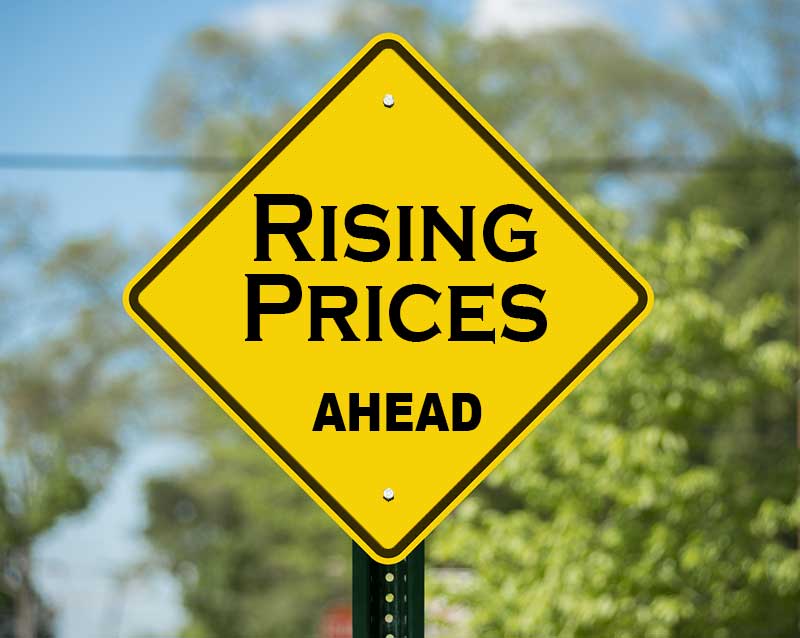
05 Jul Thinking of raising your prices? Read this first
Rising food and beverage costs, electricity and gas bills; upwards pressure on wages; interest rates and inflation steadily rising, should I raise my prices to compensate?
Increasing prices used to be the last resort for most hospitality operators. With oodles of competition, you run the risk that customers will vote with their wallets and go elsewhere.
However, with less competition, the risk of pricing yourself out of the market may be less severe.
Unlike previous periods of economic uncertainty where spending on dining out and out of home entertainment tended to drop, the public are spending at levels well above what they were pre-pandemic. According to CommBank iQ figures for April 2022 these categories are now up 14 per cent from their pre-pandemic levels in 2019.
For many hospitality businesses, there’s no shortage of customers and cashflow, but profitability is not keeping up with the added expense of opening the doors.
What should you look at to make an informed decision about raising prices to stay profitable?
Consider the following:
Operating profit or loss
Do you know what your expenses are in all areas? There’s a surprising number of businesses basically flying blind in this regard due to not tracking operating expenses regularly enough. If you’re not generating timely operational financial reporting, how will you know where to focus your management attention? Just raising prices and hoping this fixes the issue is not recommended.
Effective financial control when costs are extremely volatile requires rapid reaction.
- Are all menu items (food and beverage) properly costed and delivering an appropriate margin?
- Are those costings current, based on accurate recipes?
- Are substitute ingredients on stand-by to replace those that get too expensive?
- Are you able to rapidly adjust your menus if you’re unable to fix an unprofitable item due to price and/or quality fluctuations of ingredients?
- Are you getting the best deals possible with your suppliers?
Customer perception/satisfaction
Are you aware of your average operating standards from the customer’s perspective? Without a mystery shopper or customer perception program of some kind, you won’t be able to rapidly identify areas in your operation that are causing customers to leave your business with a less than fantastic opinion of their experience.
You have more flexibility to charge what you need to if customer perception is consistently positive. Are most of your customers walking away feeling good about their experience, that their expectations were met or exceeded, and they received value for money? If the answer to this question is no, then raising prices is certainly not your priority. Fixing customer perception is.
Competitor/market analysis
Do you have a clear pricing policy? Do staff responsible for beverage and food menu creation in your business understand your desired market level and menu price range?
Are you delivering a comparable offer at your desired market level?
Internal selling skills
If I assume that your product is consistent, and the service delivery generally well perceived, then an obvious opportunity for improved profitability without charging customers more is to increase customer average spend. This is particularly relevant while the public continue to seek out experiences post-pandemic. Tap into this pent-up desire to live a little.
- Have you made it as easy as possible for guests to spend?
- Is your menu constructed to encourage impulse and add-on sales?
- Do your customer facing staff understand which menu items (food & beverage) are the least labour intensive to produce and therefore likely to have a better margin?
- Could you offer specials (additional items) that are premium (priced above your usual range) to tap into the desire for customers to treat themselves (live a little) – caviar bumps or freshly shaved truffles anyone?
Key take-aways
Knowing that you have a profitability issue, without knowing whether you have a customer perception issue is a risky jumping off point to increase prices.
Most people don’t mind paying more when they’re confident that the experience will deliver.
The rising cost of living is headline news, and if there was ever a time for the public to accept price rises in hospitality venues, it’s now ($10+ for a lettuce in the supermarket, $24/kg for green beans anyone?!).
The long-term profitability of your business relies on consistently delivering above average standards of product, service and environment at your market level. Then you can charge what you need to and stay profitable.



